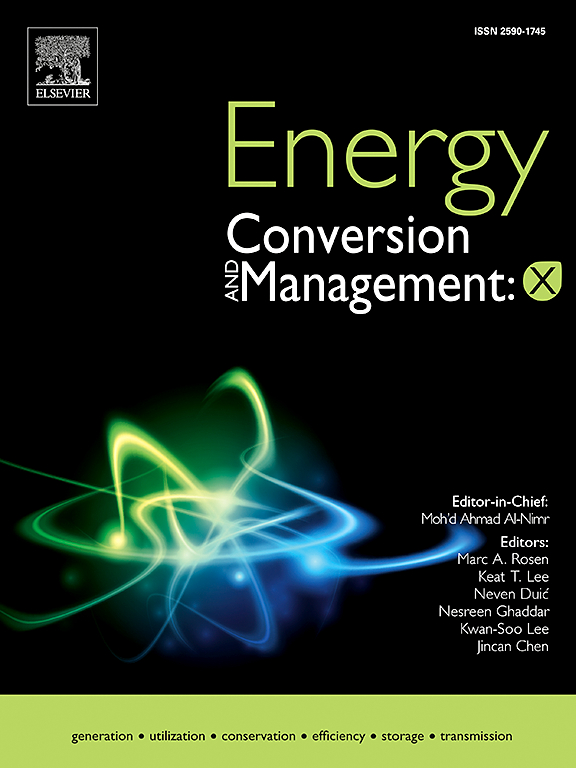Multi-objective optimization and posteriori multi-criteria decision making on an integrative solid oxide fuel cell cooling, heating and power system with semi-empirical model-driven co-simulation
IF 9.9
1区 工程技术
Q1 ENERGY & FUELS
引用次数: 0
Abstract
An integrative solid oxide fuel cell combined cooling, heating and power system in green buildings with hydrogen energy of byproduct water enables carbon neutrality transformation. However, underlying mechanisms on capacity sizing of combined cooling, heating and power system devices and its impacts on system techno-economy have not been figured out especially considering dynamic degradation and efficiency of associated devices. In this study, a multi-software optimization platform is established by MATLAB-TRNSYS co-simulation for sizing parametrical analysis, with well balance of modelling complexity and computational efficiency. A self-sufficient combined cooling, heating and power system is modelled integrating with a semi-empirical surrogate model of solid oxide fuel cell to interact with other balance of plant types efficiently. Total energy efficiency and annual total cost are optimized through parametrical analysis on device size of each component (battery, electrolyzer and solid oxide fuel cell) and analysis of variance for contribution ratio quantification. Results indicate that, the size increase in electrolyzer and solid oxide fuel cell will improve system total energy efficiency by 13.635 % and 2.194 %, but promote annual total cost by 4.042 × 104 $ and 2.389 × 103 $, respectively. Besides, sensitivity analysis indicates that the electrolyzer size prioritizes other design parameters in techno-economic performance. Optimal sizes of battery, electrolyzer and solid oxide fuel cell are in cell number range of 333 – 403, 17 – 20, and 26 – 30, respectively, with corresponding optimal total energy efficiency and annual total cost at 70.861 % – 72.147 % and 6.723 × 104 $ – 7.325 × 104 $, respectively. The research results can provide guidance on hydrogen-based cooling, heating and power system design and operation with techno-economic feasibility for low-carbon district energy transition.
求助全文
约1分钟内获得全文
求助全文
来源期刊

Energy Conversion and Management
工程技术-力学
CiteScore
19.00
自引率
11.50%
发文量
1304
审稿时长
17 days
期刊介绍:
The journal Energy Conversion and Management provides a forum for publishing original contributions and comprehensive technical review articles of interdisciplinary and original research on all important energy topics.
The topics considered include energy generation, utilization, conversion, storage, transmission, conservation, management and sustainability. These topics typically involve various types of energy such as mechanical, thermal, nuclear, chemical, electromagnetic, magnetic and electric. These energy types cover all known energy resources, including renewable resources (e.g., solar, bio, hydro, wind, geothermal and ocean energy), fossil fuels and nuclear resources.
 求助内容:
求助内容: 应助结果提醒方式:
应助结果提醒方式:


